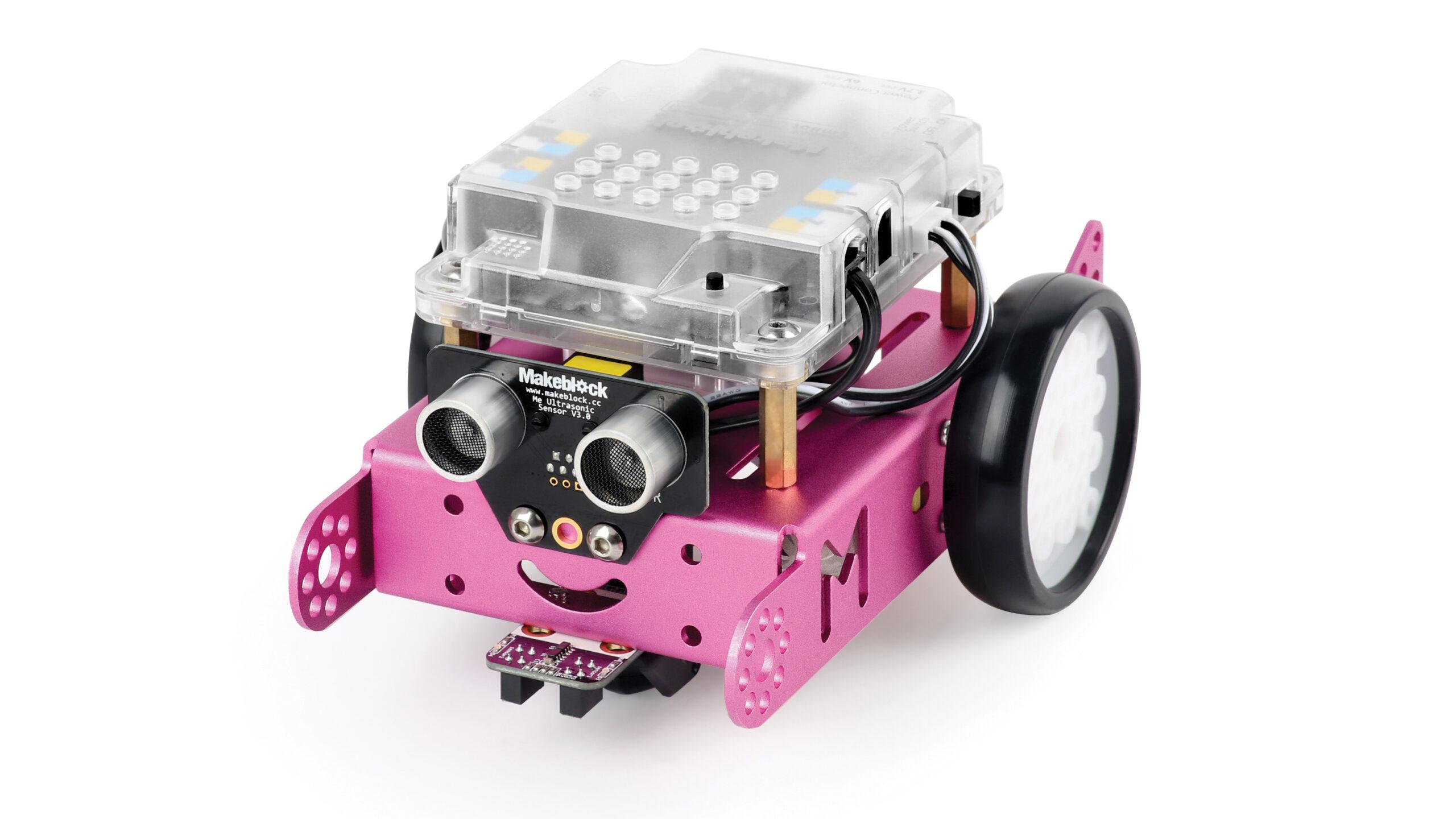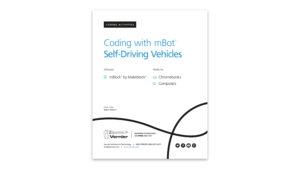Simplifying with Loops
Experiment #M4 from Coding with mBot: Self-Driving Vehicles
- Subject
- Engineering Outreach
Introduction
In this activity, students learn to use a loop and a variable to program mBot to make multiple turns. Loops are a common control structure in programming; they increase the efficiency of the coding process and make the code cleaner and easier to read. A variable can be thought of as a container that can hold a information such as numbers or a word. NOTE This activity is designed to follow Activity 3.
Loops and variables can be difficult concepts for students. Loops are used frequently in later activities, so it is worth spending time to ensure that students understand them well. Conversely, variables are only used in a few other programs; it is less important for students to fully understand the concept of variables.
NOTE At the time of release, the “repeat” and “repeat-do” blocks in the mBlock Blockly app are incorrectly labeled “forever” and “forever-do”. Fortunately, the “forever” and “forever-do” blocks function in the same way as the “repeat” and “repeat-do” blocks. Direct to students use the “forever” and “forever-do” blocks, and their programs will work as expected. The app developer expects to correct the error in a future release.
Objectives
- Learn to how to use a loop control structure to perform a repeated action.
- Create and use a variable to temporarily store a value to be used later.
- Write an mBot program using the mBlock Blockly app.
- Practice writing code and troubleshooting when problems arise.
Sensors and Equipment
This experiment features the following sensors and equipment. Additional equipment may be required.
Option 1

Option 2

Ready to Experiment?
Ask an Expert
Get answers to your questions about how to teach this experiment with our support team.
- Call toll-free: 888-837-6437
- Chat with Us
- Email support@vernier.com
Purchase the Lab Book
This experiment is #M4 of Coding with mBot: Self-Driving Vehicles. The experiment in the book includes student instructions as well as instructor information for set up, helpful hints, and sample graphs and data.

